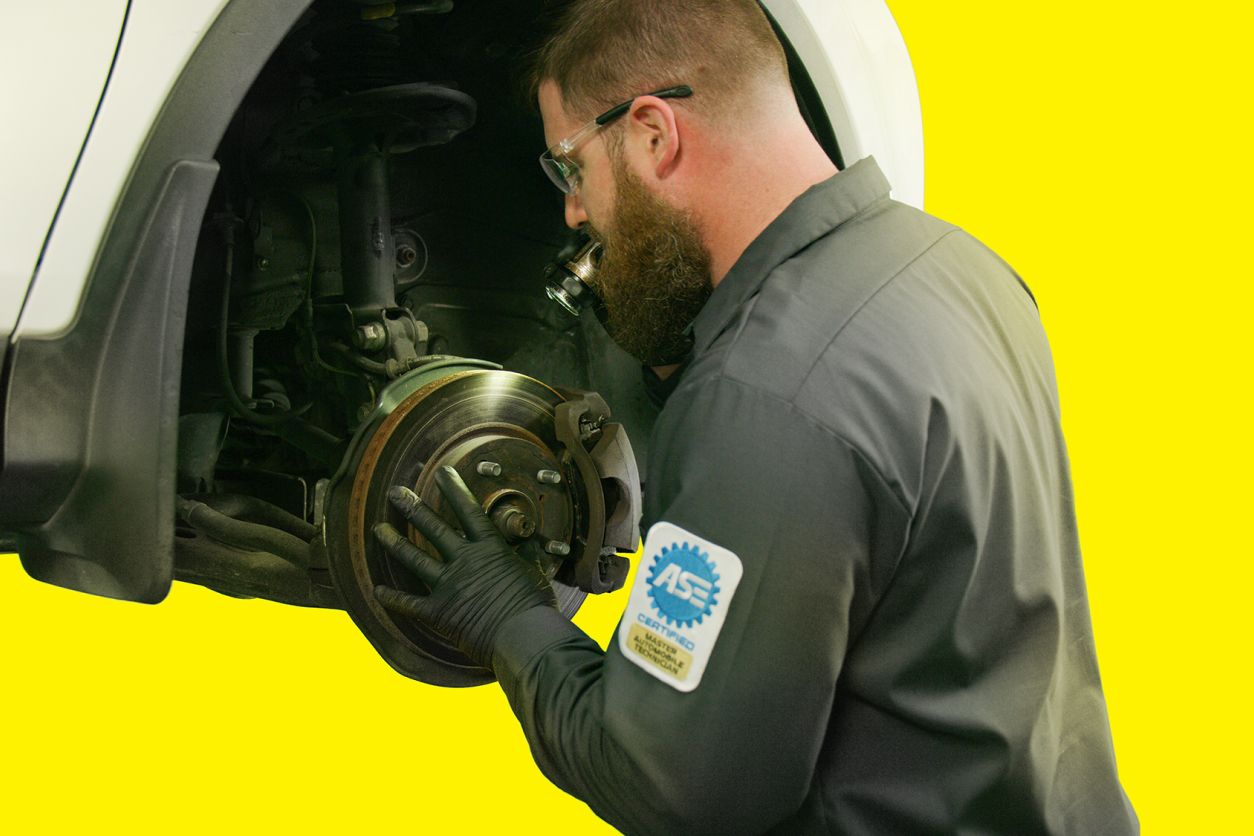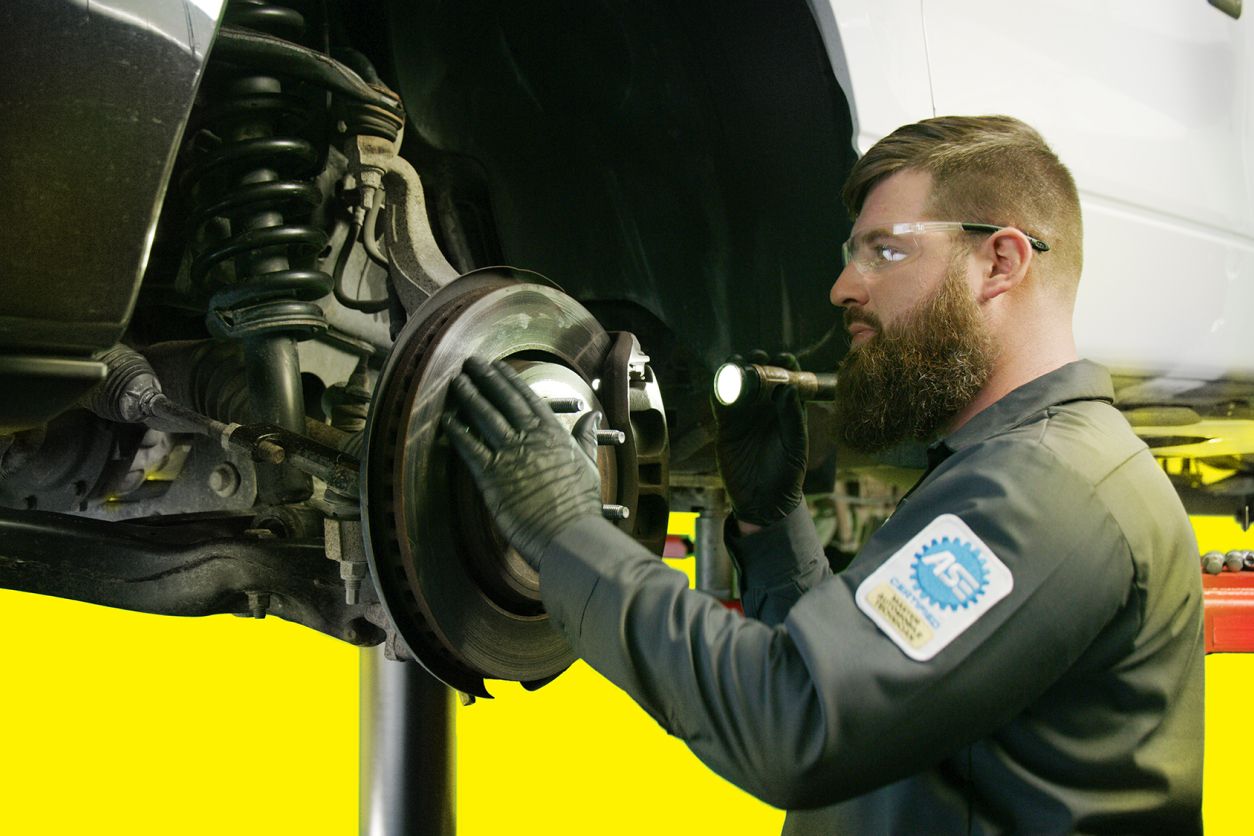Unless you are a car repair afficionado, the phrases ”exchanging your brake fluid” or “bleeding your brakes” is probably something you’ve never heard before. It may sound like messy business, but brake fluid exchanges are a standard maintenance service for some vehicle manufacturers. Essentially, exchanges are performed to remove old brake fluid and replace it with new brake fluid. Get to know a little more about the auto braking system as we walk you through what a brake fluid exchange is when you may need this service.
HOW DO CAR BRAKES WORK?
Hitting the brakes seems like a simple process. You press down the brake pedal and your car stops, but there is more to it under the surface. With a standard hydraulic disc brake system, hitting the brake pedal supplies brake fluid to each brake caliper at each corner of your vehicle. Brake fluid pushes against the brake caliper pistons which then pushes against your brake pads. Brake pads then put pressure on the rotors that rotate with your wheel. It is the friction between the brake pads and rotors that brings your vehicle to a stop.
WHY WE PERFORM A BRAKE FLUID EXCHANGE AND HOW IT’S DONE
Over time the additives in the brake fluid are spent doing their job and, if left in the brake system, could result in corrosion. The goal of exchanging brake fluid is to get that old brake fluid and any corrosive debris out and replace it with new brake fluid containing fresh additives. When a technician exchanges your brake fluid they will:
1. READY A SUPPLY OF CLEAN BRAKE FLUID
Though it can be done manually, many technicians will attach a device to the master cylinder of the vehicle to pre-equip it with an ample supply of new brake fluid. Using this device brake fluid is readied to enter the braking system without allowing any air to get in.
2. BLEED THE BRAKE SYSTEM
The technician will then open a variety of bleeder screws in a specific order, allowing old brake fluid to be displaced by new brake fluid. In some vehicles, the technician may also need to open additional bleeder screws or ports to help ensure that the old brake fluid had been displaced AND there is no air left in the hydraulic system.
3. CONFIRM THE FINAL BRAKE FLUID LEVEL AND CONFIRM THE OVERALL FUNCTIONALITY
After removing any external brake fluid bleeding devices and confirming the new brake fluid level is properly filled, the technician will make sure that the braking system functions properly.
HOW OFTEN TO EXCHANGE BRAKE FLUID
Some vehicle manufacturers list brake fluid exchange intervals as part of their scheduled maintenance. If you are unsure of your schedule, you can have a technician review if you need a brake fluid exchange. Typically, technicians test brake fluid by using special litmus strips that measure levels of copper. At certain levels this can indicate the start of brake fluid additives allowing corrosion, which is a sign you may need to exchange brake fluid in your vehicle.
LEAVE BRAKE SERVICE TO THE PROFESSIONALS
Brake fluid exchanges and bleeding brakes are both complex processes and can be difficult to do correctly without the right training. Tires Plus has the expertise you need, with professional brake services and free brake inspections across our repair shops. Keeping up with important brake maintenance is critical for your vehicle performance and your safety on the road. So, stop by your nearest Tires Plus for all your vehicle repair needs.



